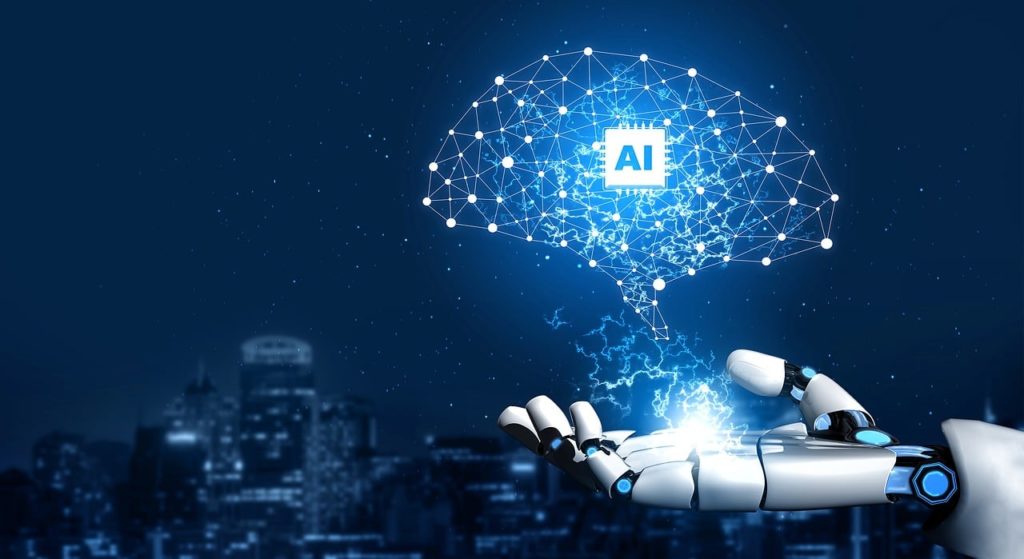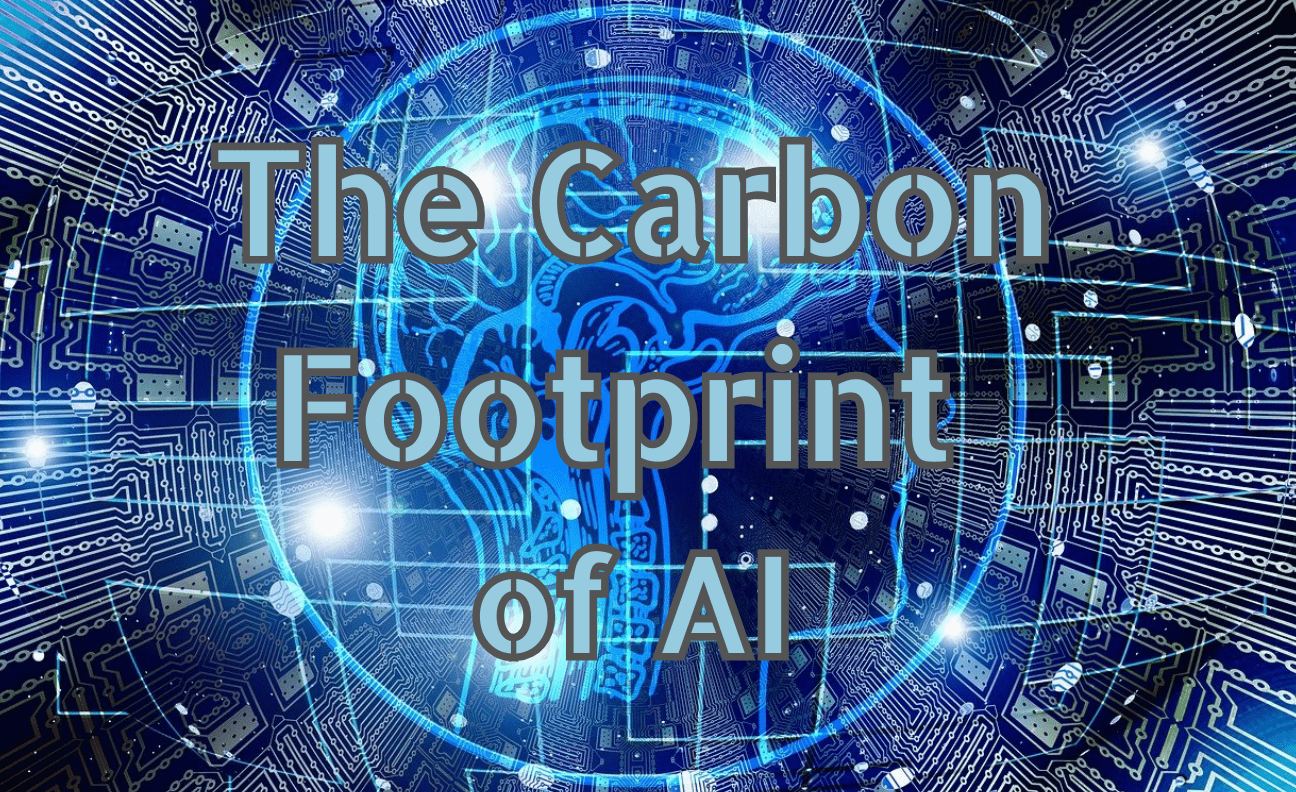In a world driven by digital innovation, data centres are the unsung heroes behind the scenes, but their environmental impact is now in the spotlight. As artificial intelligence (AI) continues its relentless march, the carbon footprint of the IT industry is set to grow exponentially.
This feature explores the pressing questions surrounding the environmental cost of AI, the race for energy-efficient solutions, and the potential for AI to reshape our relationship with data centres.
The Carbon Conundrum: AI and Data Centers
Across the globe, data servers are humming, consuming both megawatts and precious natural resources to bring life to the digital world. The planet’s 8,000 or so data centres are the foundation of our online existence, and they are poised to grow even further with the continuing rise of artificial intelligence.
By 2025, the IT industry could consume 20 percent of all electricity produced and emit up to 5.5 percent of the world’s carbon emissions. Therefore, it’s a pressing concern as startups and companies strive to keep pace with Silicon Valley‘s relentless march forward.

Untethering AI for a Greener Future
The CEO of Untether AI, a pioneering chip-making company focused on energy-efficient AI, warns that Pandora’s box is open, expressing that the choice is clear: harness AI to enhance climate goals or ignore them and face consequences within a decade.
What’s more, the transformation of data servers to AI readiness is already underway, marking a once-in-a-generation inflection point in computing. However, the mission’s scope is somewhat colossal.
Untether AI is at the forefront of this transformation. Their specialised chips aim to make AI more energy-efficient, offering a potential solution to the looming environmental crisis.
Interestingly, these chips can significantly reduce the energy consumption of AI applications, from natural language processing to image recognition, making it possible to maintain the exponential growth of AI while mitigating its carbon footprint.
The Environmental Toll of AI Training
The creation of generative AI tools, like GPT-4 and PaLM2, involves two critical stages: training and execution. Studies reveal the staggering environmental cost of training AI models.
For instance, training a single AI model can emit the CO2 equivalent of five cars over their lifetimes. Google and UC Berkeley found that training GPT-3 resulted in 552 metric tons of carbon emissions. With models like GPT-4, which are even larger, the environmental impact will only grow.
The enormity of this challenge is further emphasised by the sheer scale of AI training data. GPT-4, for example, is trained on around 570 times more parameters than its predecessor, GPT-3. This increased scale comes at a significant environmental cost, raising concerns about the sustainability of AI development.

GPU Power and Inference
Nvidia, the AI industry’s chip giant, provides the processors indispensable for training AI models, known as GPUs (Graphics Processing Units). While these GPUs are more energy-efficient than typical chips, they still remain formidable consumers of power.
On the other hand, the other side of generative AI is development, or inference, which is when the trained model is applied to identify objects, respond to text prompts, or perform other tasks.
Inference doesn’t necessarily require the computing heft of a Nvidia chip, but taken cumulatively, the endless interactions in the real world far outweigh training in terms of workload.
An assistant professor of computer science at Hertie School in Berlin emphasised that inference is going to be even more of a problem now that AI models like ChatGPT, which can be used by anyone, can be integrated into daily life through apps and web searches.
What’s more, the demand for inference capabilities is surging, and it’s a significant contributor to the energy consumption associated with AI.
Tech Giants’ Environmental Commitments
Major cloud companies, such as Amazon Web Services and Microsoft, pledge to become more energy-efficient. Amazon Web Services has pledged to be carbon-neutral by 2040, while Microsoft has set an even more ambitious goal of becoming carbon-negative by 2030.
Either way, these commitments are a testament to the industry’s recognition of its environmental impact and the urgency of addressing it.
The latest evidence suggests that these companies are serious about energy efficiency. Between 2010 and 2018, global data centre energy use rose by only 6 percent, despite a 550 percent increase in workloads and computing instances, according to the International Energy Agency.
Therefore, these efforts demonstrate that the industry is actively working to decouple its growth from its environmental impact.

AI’s Revolutionary Potential
Silicon Valley’s AI leaders argue that discussions about AI’s carbon footprint underestimate its transformative power. They believe that the mass deployment of AI and faster computing will, in the end, diminish the need to go to the world’s data clouds.
Furthermore, AI’s superpowers will turn a laptop, car, or the device in a pocket into an energy-efficient supercomputer without the need to retrieve data from the cloud.
It is thought that In the future, there will be a little tiny model that sits on a phone, and 90 percent of the pixels will be generated locally, while only 10 percent will be retrieved from the cloud.
What this means is that this shift in data processing holds the promise of significant energy savings, revolutionising our approach to computing and data storage.
Dreaming Big While Balancing Innovation and Environmental Responsibility
OpenAI‘s representative envisions AI building a completely new future. They believe that once there is a truly powerful superintelligence, addressing climate change will not be particularly difficult.
This illustrates the audacious potential of AI to tackle global challenges and reshape our world. It encourages us to think big and consider the profound transformations that AI could bring about.
However, while AI’s development surges ahead, experts have expressed concerns that environmental considerations may be taking a backseat. Large corporations are investing heavily in AI, but questions arise about their awareness of the environmental impact.
Therefore, as the AI revolution unfolds, striking a balance between innovation and environmental responsibility is going to be crucial.

Conclusion: A Crossroads of Innovation and Responsibility
The IT industry’s rapid evolution and the growth of AI present an unprecedented opportunity to reshape the digital landscape. Yet, they also pose significant environmental challenges, meaning that balancing innovation and environmental responsibility is the key to ensuring that the digital future remains sustainable.
As we harness the power of AI, we must also strive to minimise its carbon footprint, embracing the promise of technology while safeguarding our planet for future generations.
The future of AI and our planet’s well-being are intertwined, and it’s a balance we cannot afford to ignore. As the AI industry races forward, it must remain vigilant in its commitment to environmental sustainability and finding innovative solutions that allow us to harness the power of AI without sacrificing the health of our planet.
Therefore, this means that in this crossroads of innovation and responsibility, the choices we make today will continually shape the digital world of tomorrow.









